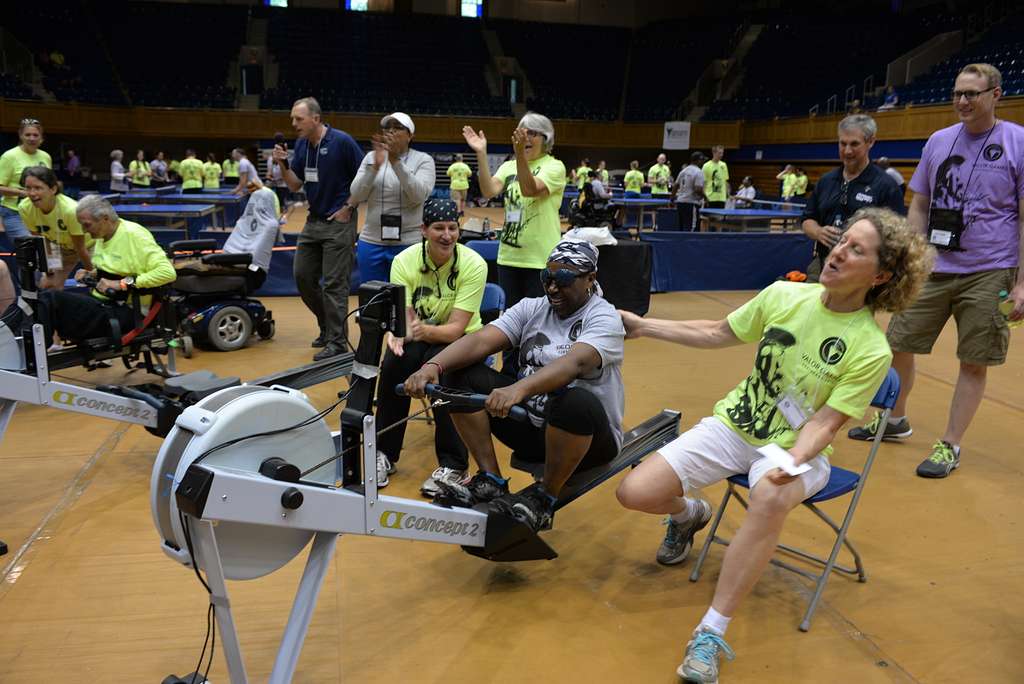In the quest for a well-rounded, effective, and efficient workout, the rowing machine has emerged as a powerful contender. With its ability to provide a full-body workout, improve cardiovascular health, and build strength, rowing machines have gained immense popularity in gyms, homes, and fitness studios worldwide. In this blog post, we’ll dive into the world of rowing machines, exploring their benefits, proper usage, and why they deserve a spot in your fitness routine.
The All-Inclusive Workout
One of the most significant advantages of rowing machines is their ability to engage multiple muscle groups in a single session. Unlike many cardio exercises that primarily focus on the lower body, rowing involves both the upper and lower body, making it a fantastic full-body workout. The pulling motion engages muscles in the back, shoulders, arms, and core, while the pushing motion works the legs and glutes. This holistic engagement not only burns calories efficiently but also promotes muscle balance and symmetry.
Cardiovascular Fitness Redefined
Rowing isn’t just about building muscle; it’s also a powerful cardiovascular exercise. A properly executed rowing routine elevates your heart rate and gets your blood pumping, improving overall cardiovascular health. Regular rowing sessions help increase lung capacity, enhance circulation, and boost endurance. The combination of strength training and cardiovascular exercise makes rowing machines a time-efficient way to achieve well-rounded fitness.
Low Impact, High Results
One of the standout features of rowing machines is their low-impact nature. Unlike activities like running or jumping, which can place significant stress on joints and lead to potential injuries, rowing is gentle on the body. The sliding seat and smooth motion minimize impact on the knees and ankles, making it an excellent option for individuals of all fitness levels, including those with joint concerns.
Proper Rowing Technique
While rowing machines offer numerous benefits, achieving those benefits depends on using the correct technique. Here’s a step-by-step guide to ensure you’re making the most out of your rowing sessions:
- Starting Position: Begin by sitting on the seat with your feet secured in the foot straps. Grab the handlebar with an overhand grip, keeping your arms extended, shoulders relaxed, and back straight.
- Leg Drive: Push off with your legs, extending them while keeping your arms straight. Your back should remain in a slightly inclined position.
- Body Swing: Once your legs are extended, lean back slightly from your hips while pulling the handlebar towards your lower ribs. Engage your core and avoid leaning too far back, which can strain your lower back.
- Finish Position: At this point, your legs are extended, your torso is leaning back, and the handlebar is close to your body.
- Recovery: Reverse the sequence—extend your arms, hinge forward from your hips, and then bend your knees to slide back to the starting position.
Remember, proper form is crucial to prevent injuries and maximize the effectiveness of your workout. Consider seeking guidance from a fitness professional or watching instructional videos to master the technique.
Rowing for Everyone
Rowing machines are incredibly versatile and accommodating for various fitness levels. Whether you’re a beginner looking to start a fitness routine, an athlete seeking cross-training options, or someone recovering from an injury, rowing machines can be tailored to suit your needs. You can adjust the resistance levels to match your fitness level and gradually increase intensity as you progress.
Incorporating Rowing into Your Routine
To reap the benefits of rowing machines, consistency is key. Aim for at least 20-30 minutes of rowing per session, gradually increasing the duration as you build endurance. You can incorporate rowing into your weekly routine by alternating it with other forms of exercise such as strength training, flexibility work, and restorative activities.



